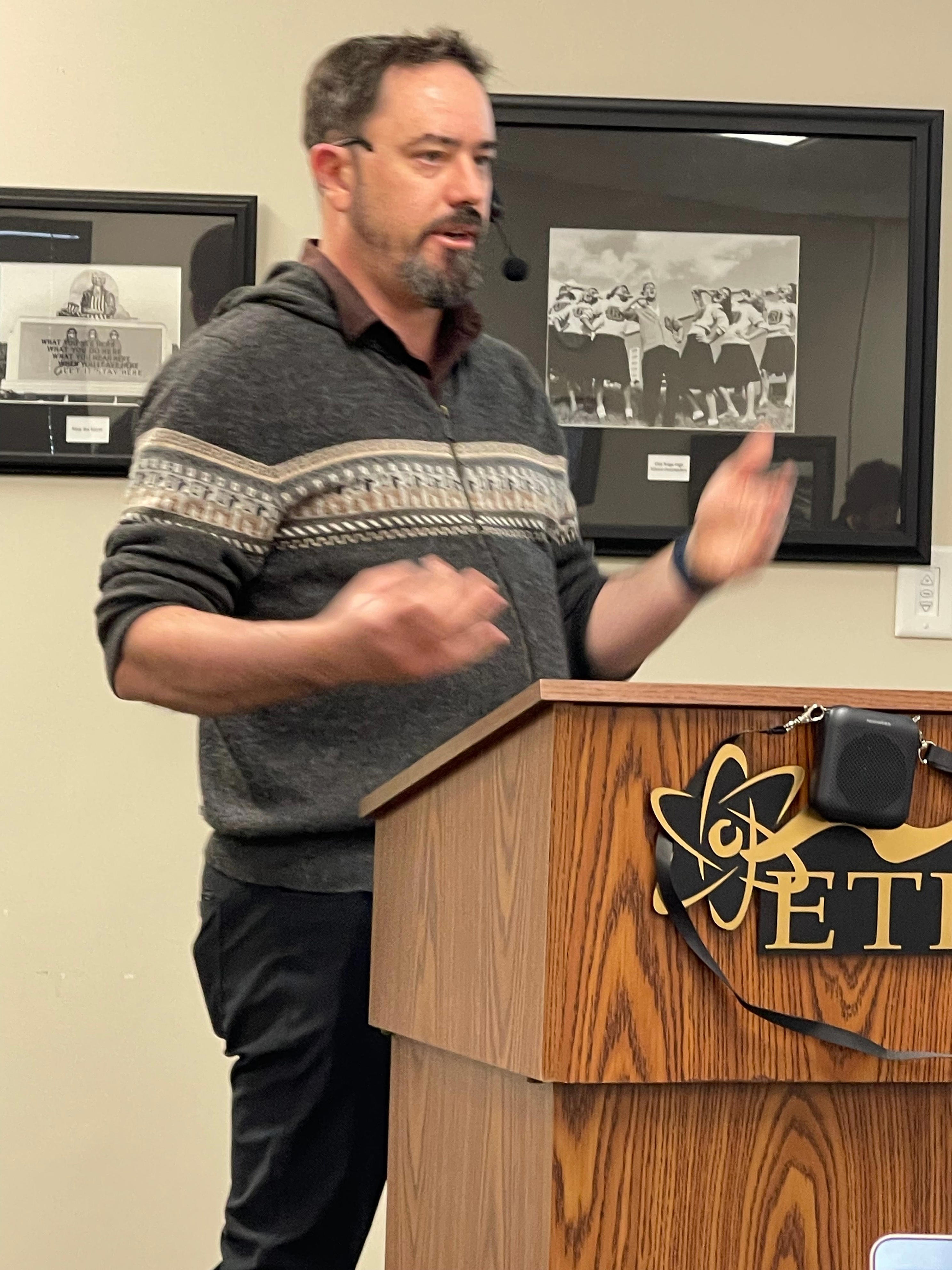ORNL Scientist Unlocks Quantum Computer Secrets

Innovations in Quantum Materials and Atomic Precision
Researchers at Oak Ridge National Laboratory (ORNL) are making significant strides in the development of quantum materials, which hold the potential to revolutionize computing speed, communication security, and detector sensitivity. Central to this research are advanced microscopes that allow scientists to manipulate atoms with unprecedented precision. One such innovation is the "synthescope," a modified scanning transmission electron microscope (STEM) developed by ORNL. This tool enables researchers to "write" with atoms, placing them exactly where needed within a substance to create novel materials with tailored properties.
A key breakthrough in this field involves the use of artificial intelligence (AI). AI algorithms learn how to manipulate atoms to enhance a material's properties by controlling the speed at which atoms are introduced and the size of electrical pulses used to position them. This approach is part of a broader effort to build materials that can support quantum computing and other advanced technologies.
Stephen Jesse, a materials scientist at ORNL’s Center for Nanophase Materials Sciences (CNMS), has been instrumental in these efforts. He has discussed the challenges and opportunities of creating materials with atomic precision in his talks on "Building Materials and Devices with Atomic Precision: Perils and Promise." Jesse and his team work with various types of microscopes, including atomic force microscopes, scanning tunneling microscopes, and STEMs, to study quantum properties that emerge at the atomic scale.
These quantum properties are harnessed through data carriers like polarized photons of light, trapped atomic ions, and electronic or atomic spins. These components, known as qubits, form the basis of quantum computing. Unlike traditional bits, which are either 0 or 1, qubits can exist in multiple states simultaneously due to a phenomenon called superposition. This allows quantum computers to process vast amounts of information more efficiently than classical digital computers.
Jesse highlighted the potential of quantum computing to solve complex problems, such as designing new medicines or breaking secret codes. However, qubits are fragile and require extremely controlled environments, often needing to be cooled to near absolute zero to maintain their stability.
The challenge for researchers like Jesse is to develop materials that can sustain quantum computations without losing information. One approach involves combining different atoms, such as metal atoms embedded in graphene, a single layer of carbon atoms arranged in a hexagonal lattice. This combination could enable ultra-fast quantum computations.
Historically, tools like the scanning tunneling microscope (STM) have played a crucial role in manipulating atoms. In 1989, IBM scientists used an STM to spell "IBM" using xenon atoms, demonstrating the potential of atomic-scale manipulation. More recently, researchers have explored using STM lithography to position atoms precisely in materials, paving the way for atomic-scale devices.
At ORNL, scientists like An-Ping Li have pioneered methods to synthesize semiconducting graphene nanoribbons from polymer precursors. This technique allows for the creation of ultra-narrow ribbons without the need for a metal substrate, resulting in a wide band gap semiconductor useful for electronics.
Other researchers, such as Albina Borisevich, have used STEMs to induce transformations in materials like strontium titanate. By applying a focused electron beam, she was able to crystallize parts of an amorphous material, showcasing the potential of electron beams in modifying material structures.
Jesse also emphasized the importance of modeling and experimentation in positioning atoms at the atomic scale. Researchers like Mina Yoon are exploring how defects in two-dimensional materials can serve as qubits. For instance, removing carbon atoms from a diamond structure and introducing nitrogen atoms can create a system where an extra electron can move between energy bands.
While three-dimensional materials present challenges, much of the experimentation has focused on graphene and other two-dimensional materials. Ondrej Dyck at CNMS demonstrated how a silicon atom can be attracted to a hole in graphene using an electric field from the STEM’s electron beam. This process allows for the placement of dopant atoms, such as copper, tin, titanium, and others, onto the graphene surface.
To improve control over atomic positioning, Jesse and his team have developed the synthescope, which integrates chemical vapor deposition, pulsed laser deposition, and heat treatments. This tool enhances the ability to manipulate atoms with greater precision, opening new possibilities for quantum computing and other applications.
Through these advancements, researchers at ORNL are pushing the boundaries of materials science, paving the way for the next generation of quantum technologies. The ongoing development of tools like the synthescope and the integration of AI into atomic manipulation mark significant steps toward realizing the full potential of quantum computing.
Post a Comment for "ORNL Scientist Unlocks Quantum Computer Secrets"
Post a Comment